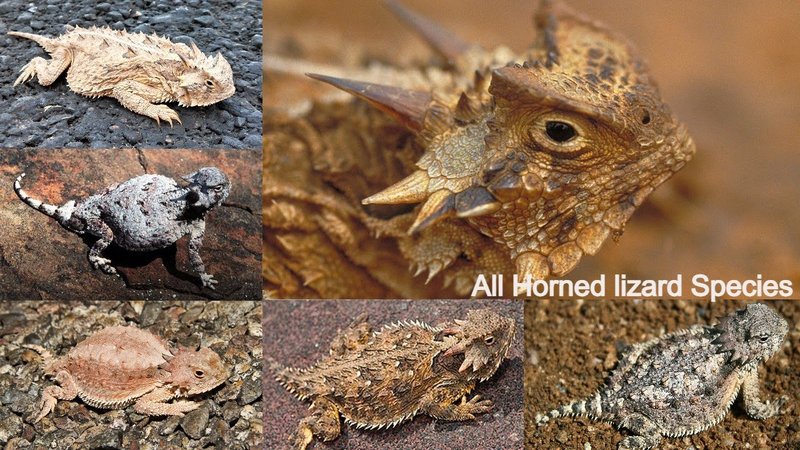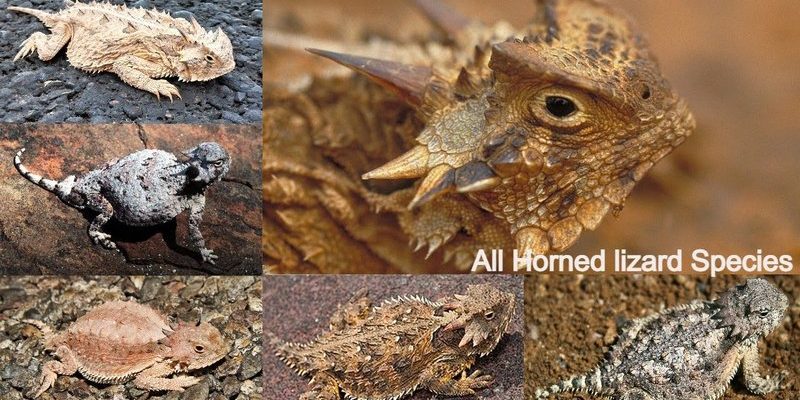
In this article, we’ll dive into a world of reptiles and amphibians that share traits with the horned lizard. We’ll explore their distinctive features, habitats, and behaviors to help you differentiate between them. So, grab your metaphorical magnifying glass, and let’s get started on this wild adventure!
1. Eastern Spiny Lizard
The Eastern spiny lizard is found in the southeastern United States, making it a close cousin to the horned lizard. Just like the horned lizard, it has a spiky appearance, but you’ll notice a few key differences. The Eastern spiny lizard boasts a longer, more elongated body, and its spikes tend to be less pronounced compared to the horned lizard’s dramatic horns.
These lizards are also a bit more colorful, often coming in shades of blue and gray. You might spot them sunning themselves on rocks or tree branches, where they thrive in forested areas. Unlike the horned lizard, which mainly munches on ants and insects, the Eastern spiny lizard enjoys a more varied diet, including fruits and flowers.
If you see a spiny lizard, just take a moment to compare its longer body and the shape of its spikes with that of the horned lizard. You’ll quickly notice who’s who in the reptile world!
2. Short-Horned Lizard
The short-horned lizard might sound like a mini version of the horned lizard, and in many ways, it is! This lizard typically measures about 2 to 4 inches long, making it noticeably smaller than its horned relatives. Found primarily in grasslands and dry regions across the western U.S., it’s a master of camouflage. The short-horned lizard’s coloration helps it blend into the sand and dirt, which can be an effective defense tactic against predators.
What sets the short-horned lizard apart is its distinctly shorter horns. While the horned lizard has prominent spikes and a more rugged look, the short-horned lizard features more subtle, rounded projections. So, if you’re ever out in the wild and spot a tiny lizard with a less dramatic appearance, that just might be the short-horned lizard!
3. Texas Horned Lizard
The Texas horned lizard is a direct relative of the classic horned lizard, and it’s often confused for it due to their similar appearances. Found mostly in Texas and neighboring states, this lizard is slightly larger, with broader horns on its head. It sports a unique, flattened body that helps it blend with the arid ground it calls home.
One of the standout features of the Texas horned lizard is its ability to change color depending on the temperature and environment. Unlike the standard horned lizard, which is typically beige or brown, the Texas horned lizard can take on shades of gray or even green.
When trying to distinguish between the two, pay attention to not just size but also the coloration and the pronounced horns on the Texas variant. This little detail can help you identify which horned lizard you’re encountering on your nature walks!
4. Common Spiny-Tailed Iguana
The common spiny-tailed iguana is another fascinating lookalike. Native to Central America, this iguana is larger than your average horned lizard, often reaching lengths of up to 4 feet. Despite its size, it shares the spiky, rugged appearance that is characteristic of spiny lizards, making it a lookalike, albeit on a grander scale.
You might wonder why this iguana behaves differently from a horned lizard. Well, spiny-tailed iguanas are predominantly herbivorous, thriving on leaves, flowers, and fruits. While the horned lizard relies heavily on ants, the iguana’s diet is a buffet of vegetation.
So, if you come across a larger reptile with spikes and a longer tail, that’s probably your spiny-tailed iguana, not a horned lizard. Think of it as the horned lizard’s big cousin!
5. Gila Monster
Moving beyond the lizard family, let’s talk about the Gila monster. This chunky, slow-moving creature is one of the few venomous lizards in the world. With its bright scales and rounded body, it’s easy to see why you’d confuse it with a horned lizard at first glance. However, the Gila monster stands out with its more vibrant colors, often sporting orange or yellow markings against a black background.
Unlike the horned lizard, which is agile and quick to hide from predators, Gila monsters tend to be more laid back. They primarily feast on small mammals, birds, and eggs, using their venom to immobilize prey before devouring it. If you’re in the southwestern U.S. or Mexico, keep an eye out for this vibrant fellow. Just don’t get too close, as that venom is no joke!
6. Desert Iguana
The desert iguana is another fascinating reptile you’ll find in the desert regions of the southwestern United States. With its smooth scales and a lighter color, this iguana might catch your eye when out exploring. While the horned lizard showcases a spiky exterior, the desert iguana is much more streamlined, making it easier for it to burrow into the sand.
This iguana is known for its social behavior, often basking together with others of its kind. Their diet consists mostly of flowers and leaves, setting them apart from the ant-loving horned lizard. If you spot a lizard that looks a bit more elegant and less rugged than a horned lizard, chances are it’s a desert iguana enjoying the sun.
7. Bearded Dragon
Next up is the bearded dragon, a popular reptile among pet lovers. While they typically inhabit Australia, these spiky lizards share some visual similarities with the horned lizard. Bearded dragons have a flattened body and can puff out their “beard” in defense, giving them a unique appearance that might remind you of the horned lizard’s spikes.
Bearded dragons are known for their friendly nature and varied diet, which includes everything from insects to vegetables. In contrast to the horned lizard’s insect-heavy menu, the bearded dragon enjoys a bit of variety. If you ever come across a lizard that looks like it could be a pet but has a spiky persona, that’s likely a bearded dragon, not a horned lizard!
8. Horned Toad
Lastly, let’s talk about the horned toad, a charming little creature that’s not exactly a lizard but has a similar spiky appearance. Commonly found in the western U.S., this amphibian has a somewhat horned and flat body, making it visually reminiscent of the horned lizard.
Horned toads are more closely related to frogs than lizards and are often mistaken for lizards due to their appearance. What’s fascinating about them is their ability to blend into their environment, making them tough to spot. Their diet mainly consists of ants, much like their lizard counterparts, but they also enjoy various insects. Next time you think you’ve spotted a horned lizard, take a closer look—it might just be a horned toad instead!
Exploring the world of reptiles can feel like unraveling a mystery, especially when you start noticing all the animals that share traits with the horned lizard. From the Eastern spiny lizard to the adorable horned toad, these creatures offer a glimpse into the diversity of the animal kingdom. Each one has its own quirks and qualities that set it apart, but they all bring something special to the table.
So, whether you’re a seasoned observer of wildlife or just embarking on your journey into the natural world, keep an eye out for these fascinating lizards. With a bit of patience and a keen eye, you’ll soon become a pro at identifying them and appreciating the unique characteristics they each have. Happy exploring!

